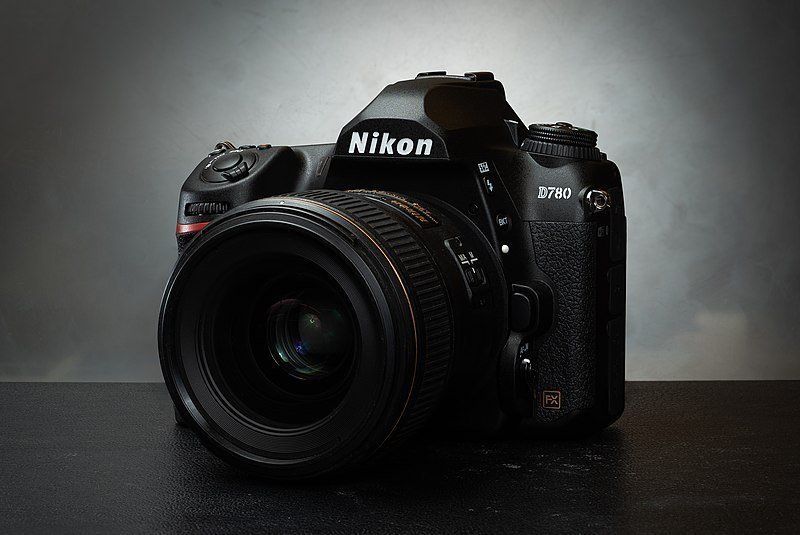The Last Nikon DSLR - A Jewel of a Camera
Today is a pretty special day for photographer-me. I picked up photography as a hobby 2 years ago, give or take a month. As much as I wanted a new camera even then, I told myself I would learn to use what I had before investing money in something new.
Well, I still don’t have something new but today, my new-to-me camera arrived from Adorama. I didn’t buy a mirrorless, and I couldn’t be happier!
Nikon D780, image source: https://commons.wikimedia.org/wiki/File:Nikon_D780_body.jpg
After the release of the Nikon Z6 Mirrorless camera, Nikon pulled one last DSLR hurrah, the D780. It is a DSLR photo/video hybrid that enables DSLR shooters to shoot how they are used to, but when switched into Live View, it acts like a Z6, at least in speed and functionality. Compared to what I usually get from my old D3400, a capable my-first-DSLR, the image quality is absolutely phenomenal! And low-light performance is outstanding!
I couldn’t take it out and shoot today, I had other responsibilities, but a few quick snaps around the house were proof enough that gear does matter. Honestly, I was shocked. As soon as I have photos to share, I will.
Nikon’s DSLR Lineup
In case you’re not familiar with Nikon’s DSLR lineup, the D780 is sold as an “Advanced Entry” camera, the D850 is sold as the “Professional” camera, and D6 as the “Flagship.” Oddly, the D6 still costs more than Nikon’s new, and considerably more capable, Mirrorless flagship, the Z9. Go figure.
D780 vs Z6 vs Z6 II
The D780 sits weirdly between the Z6 and the Z6 II. They all share the same Expeed 6 processor, full-frame sensor, 24.5 megapixels, low-light performance, etc. Yes, the Z6 II does have two Expeed 6 processors instead of one like the D780 and Z6. As far as memory card slots go, the Z6 has one, while the D780 and Z6 II both have two. And while the D780 supports SD-type cards and not CF-Express type B cards (which are faster and more expensive than SDs), it does support two SDXC UHS-II v90 cards, which offer speeds higher than the D780 can use. SDXC UHS-II V60 cards are sufficient for my needs. Comparatively, the Z6 and Z6 II can’t use the full speed capabilities of the more expensive CF-Express type B cards either. Regarding frames/second, in DSLR mode, the D780 is 7 fps, and in Live View, it can shoot 12 fps, the same as the Z6. The Z6 II, 14 fps.
On the upside, it has been reported that the D780, when in DSLR mode, has better low-light auto-focus than the Z6. On the downside, the D780 does not have in-body image stabilization (IBIS), something that kept me from considering it for a very long time.
The primary reasons I went with the D780 instead of a Z6 or Z6 II are:
One-time cost: The used D780 I purchased from Adoram, was around $250 USD cheaper than any used Z6 II in the same condition that I could find (or any D780 for that matter), and the camera is immaculate. There is not a scratch or ding on it anywhere and has a very low shutter count! I can only guess that the cost difference is due to the absence of paper manuals, and a Power2000 EN-EL15b replacement battery instead of the usual Nikon EN-EL15c battery. A used Z6 would have been even cheaper, but unlike the D780, it has been discontinued by Nikon, and all the reasons below still apply.
On-going cost: The D780 is fully backward compatible with 50 years of existing Nikon F-mount lenses, something the Z camera line-up cannot boast, even with the FTZ II adaptor. The D780 gives me access to lots of beautiful glass on the cheap (comparatively). As mentioned above, SDXC cards also cost significantly less than CF-Express type B cards.
Reality: Yes, gear does matter, but that does not mean you have to have the latest, greatest, and most expensive gear to take good photos. To date, the vast majority of famous and award-winning photos have been taken using cameras that are less capable than even the D780. You will be served better by endeavoring to become a master, instead of a gear-monger.
Video: While not up to the standards of the newest mirrorless cameras, the D780 arguably offers the best video performance of any DSLR, shooting excellent 4K video. As mentioned above, the D780 does not have IBIS, so you will need to use a lens with vibration reduction (VR), and either a tripod or a gimbal (just make sure the gimbal works with DSLR cameras and not just mirrorless).
* One or more links on this page are affiliate links, and as an Amazon Associate, I earn from qualifying purchases.
I’ve had the D780 for less than a day, but I’m already incredibly happy with it compared to the D3400. I will have to get used to shooting full-frame instead of APS-C, and given all the new bells and whistles (so many buttons!), I will have to learn a new way to shoot. But these are not negatives, I’m very much looking forward to it!
In the end, what you choose to buy and use should fit your goals, your budget, and your shooting style. Just be honest with yourself.
A Warning
A warning about buying Nikon cameras on the Internet. Nikon USA will only warrantee and service authorized Nikon USA products. Most online resellers are not authorized dealers and sell International/Gray Market Nikon products. The gray market products may or may not work correctly, may or may not have legal software, may or may not be able to take firmware updates, and absolutely will not be serviced by Nikon USA. Adorama is a Nikon-authorized dealer, and that is why I bought from them (and the price was great too).
